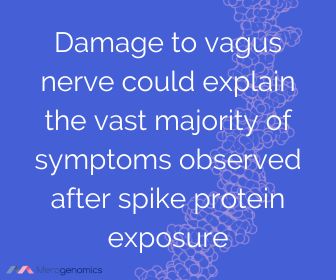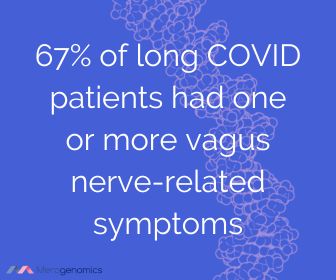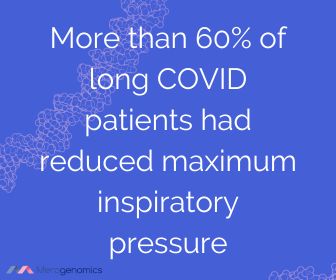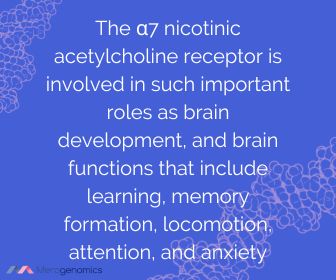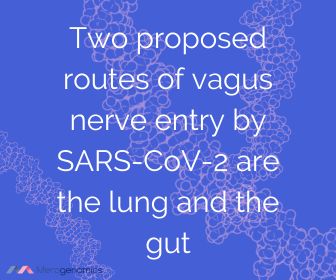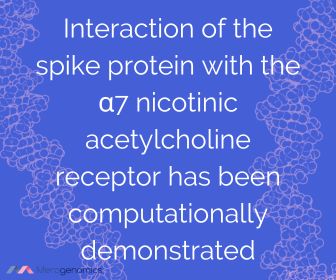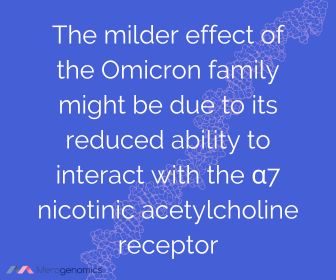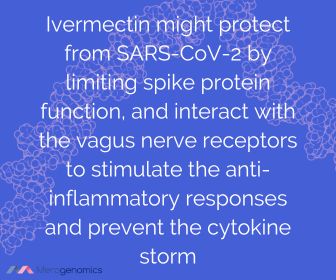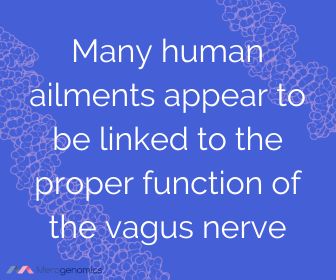
Is it all because of vagus nerve damage?
Dr.M.Raszek
Big nerve, big surprise
One of the more fascinating findings in my studies of long COVID (or spike related injury which could potentially include the use of COVID vaccines) was the suggestion of vagus nerve damage.
Fascinating because it appears that damage to this nerve could explain the vast majority of symptoms observed in COVID-19 patients, and those suffering from long-term complications after spike protein exposure.
I had been coming across this information during discussions of COVID-19 (post infection with the SARS-CoV-2) but had not paid much attention due to a lack of background knowledge. But once I plunged into the studies, a fascinating and maybe surprising story began to emerge.
Surprising because the damage to the vagus nerve might not just underlie spike related injury symptoms, but perhaps many other infections and some of the more common diseases plaguing humanity!
Further surprising because this information has been emerging for a long time now, and many scientific publications have been written on the potential benefits of ameliorating debilitating symptoms with purposeful stimulation of vagus nerve activity, yet no clinical studies had been done (until the pandemic!) to explore these remarkable benefits.
Most shocking is that the medical world appears to be ignoring such a simple solution!
But let’s retrace the steps of this detective work.
How is the vagus nerve linked to spike protein damage symptoms?
We have all heard about long COVID: long lasting complications post COVID-19. We have all also heard by now about post vaccine related injuries (also referred to as long Vax). Together obviously they point to one common denominator: damage from the spike protein.
We all like simple explanations (too bad the real world typically does not want to reward us with those). One of the more attractive theories that emerged is that the spike protein can be involved in the development of abnormal clots that are resistant to typical breakdown and hence can obstruct blood vessels throughout the body. Merogenomics has made a long video series dedicated to the topic of spike induced abnormal clotting.
Obviously, we all know that clots are not a good thing, and having potentially many of these blocking blood flow to organs could induce damage by preventing vital oxygen delivery. Some of the most frequently reported long COVID symptoms such as breathlessness, fatigue, “brain fog”, tissue damage, muscle and chest pains, high inflammation, in theory could all be easily linked to clotting.
But not all symptoms are so easy to link, such as digestive tract disturbances, difficulty swallowing or an abnormal heart rate. Remarkably, a simple explanation of all of these symptoms – including the disturbed process of clotting itself! – could be linked to vagus nerve damage.
This is because every organ thus far found to be affected by COVID-19 also happens to be innervated by the vagus nerve! And the vagus nerve is linked to controlling inflammation through a direct interaction with the immune system! So, we have a pretty direct link between all of the affected organs and the damaged inflammatory state plus a perturbed immune system.
Vagus nerve, the king of nerves
The vagus nerve is the longest nerve in the body and connects many vital organs, including the brain, heart, lungs and intestines. The vagus nerve, as a key part of the autonomic nervous system, controls the involuntary functions of the body, such as the heart rate, respiration, blood pressure or digestive rhythm.
Dysautonomia, or the disorder of the autonomic nervous system, is known as one of the potential features of COVID-19, and studies have shown damage to the vagus nerve directly.
In one interesting study, the authors looked at how the structure of the vagus nerve and how its function were affected in long COVID patients in comparison to fully recovered patients and uninfected individuals. 67% of the studied long COVID patients had one or more vagus nerve-related symptoms. On top of that, vagus nerve-related symptoms were much more frequent in long COVID patients, with a median number of 17 symptoms per individual, as opposed to rarely observed in COVID-19-recovered and uninfected individuals.
The authors pointed out that one of the more important findings was that respiratory muscles were frequently affected, with more than 60% of long COVID patients having reduced maximum inspiratory pressure (how much air you can breathe into your lungs). This was due to affected diaphragms and could explain why difficulty breathing can be observed despite normal lung imaging.
But as already mentioned above, it gets much trickier, because the vagus nerve is directly tied to controlling the immune system, as well as inflammation response. Perhaps pathogens invading this nerve are really onto something? The vagus nerve dysfunction observed in pathogenic invasion can result in excessive inflammation, something akin to a “cytokine storm”. Doesn’t that sound familiar?
How does the vagus nerve control inflammation?
All organs are controlled by the central nervous system. Hence it should not come as a surprise that the immune system is also under the control of the nervous system as well, both in specific localized areas, as well as a systemic, body-wide responses. The control of the immune system by the vagus nerve is the best studied example of that.
The key player in this story is the acetylcholine neurotransmitter via which the vagus nerve operates and sends its signals forward to execute its intended functions in different organs. The receptors responding to this acetylcholine neurotransmitter messaging are called nicotinic acetylcholine receptors, and there is a family of them. These receptors are embedded in target tissues under the control of the vagus nerve, be it other nerve cells, muscle cells, or, and this is important for our story, immune cells.
These nicotinic acetylcholine receptors are both ion channels across the cell wall membranes (they allow important ions such as calcium ions, to flow through) as well as signal transducers (they interact with other proteins to activate them which propagates a certain signal or message in the cell - often all the way to the cell nucleus where the signal influences how the genetic material of the cell is to be used in response to the outside environmental signal).
The nicotinic acetylcholine receptors are made up of 5 proteins to create the channel shape. Sometimes these 5 proteins are identical, making the channel a homo-pentamer, or they can be made of different proteins, making the channel a hetero-pentamer, and it is the composition of these that make up the different family members of the nicotinic acetylcholine receptors, and determines their functions. The spike protein itself is a homo-trimer, meaning that the final 3D structure of the spike protein on the surface of the virus is made of three identical proteins interacting with each other.
The nicotinic acetylcholine receptor that is of greatest interest to us, the one that is responding to the signals of the vagus nerve including the immune cells, is a homo-pentamer nicotinic acetylcholine receptor referred to as alpha7 (α7). It is one of the main receptors found in the brain, and the α7 nicotinic acetylcholine receptor is involved in such important roles as brain development, and brain functions that include learning, memory formation, locomotion, attention, and anxiety.
α7 nicotinic acetylcholine receptors are mainly expressed on the membrane of immune cells such as dendritic cells, T and B lymphocytes, monocytes and macrophages, all big players in the fight against pathogenic infections.
Accordingly, the vagus nerve can directly communicate with important immune cells, and this communication via acetycholine can trigger these immune cells to alter their release of certain cytokines (molecules via which the immune system mediates its responses) and reduce inflammatory response.
This vital mechanism of neuronal regulation of the immune system has been called the cholinergic anti-inflammatory pathway.
In other words, the vagus nerve can be stimulated to reduce inflammation at target organs through its release of acetycholine. Damaged vagus nerves on the other hand might no longer be able to achieve that, which can heighten the release of inflammation inducing cytokines by the immune cells, resulting in the so called “cytokine storm”.
And just like you can damage the nerve function and trigger inflammation, the reverse can also be true, where the vagus nerve function can be stimulated, and activation of the nerve will result in reduced inflammation. That is such an important trick that vagus nerve stimulation has gained lots of attention as a potential treatment of many, and I mean many, conditions!
The vagus nerve can be stimulated into function either chemically, electrically, or with contact pressure.
Obviously, acetylcholine is one such chemical that activates the vagus nerve function. Another one is, believe it or not, nicotine, a compound that mimics acetylcholine in structure. This is perhaps why you might have heard before that smokers fared better against COVID-19. So, was the inhaled nicotine stimulating the vagus nerve and hence reducing the chance of a cytokine storm?
In the end, the vagus nerve plays a crucial role in balancing the body’s response to inflammation, and making sure it does not get out of hand, thus any damage of the nerve function in any way, can have profound effects on the condition of target organs.
How is the vagus nerve infected?
There are two main routes of vagus nerve entry by SARS-CoV-2 that have been proposed. One way is the entry from the lung. The other path could be via the gut. Those would be the most likely sites where the virus would gain exposure to the vagus nerve.
But how is the virus actually entering or binding to the nerve?
The vagus nerve apparently contains all the necessary spike protein attachment points it could wish for: ACE2 receptor (spike protein main receptor to enter its target cells) as well as TMPRSS2 (one of the proteins that can cleave the spike protein, which aids in cell invasion).
Not only that but apparently the spike protein can bind to the α7 nicotinic acetylcholine receptor as well!
Anti-intuitively that smokers fair better was the first clue. Secondly, part of the spike protein amino acid sequence (the building blocks of proteins) is very similar to venomous toxins that are known to mediate their effects by binding (and blocking) the α7 nicotinic acetylcholine receptor.
Since then, a possible interaction of the spike protein with the α7 nicotinic acetylcholine receptor has been computationally demonstrated. It shows that the part of the spike protein that mimics venomous toxins is one of the areas of spike protein that binds the α7 nicotinic acetylcholine receptor. Just to make this bit more interesting, it is also the part that contains the furin cleavage site, the unusual part of the spike protein that was not expected to be seen in coronavirus family to which SARS-CoV-2 belongs, and a type of gain-of-function modification that was being played with in the Wuhan biolab before the start of pandemic. It was found that the additional presence of the furin cleavage site allows the virus to be more infectious, but that was solely assumed to be on account of making the spike protein more likely to bind to its ACE2 receptor. Now we might have another reason why the furin cleavage site might make the virus more infectious: by allowing it to alter the function of the vagus nerve. And even another way of entry of the virus into certain cells is via binding to the α7 nicotinic acetylcholine receptor.
Why is Omicron more infectious but less deadly?
Another group of authors also picked up on the notion that SARS-CoV-2 appears to have a binding site for α7 nicotinic acetylcholine receptors but instead wanted to ask if different SARS-CoV-2 variants might have had different binding affinities for the α7 nicotinic acetylcholine receptor.
So once again, using computational modelling for a best fit scenario of interaction between the Alpha, Beta, Gamma, Delta, and Omicron variants and the α7 nicotinic acetylcholine receptor, these authors noted the Omicron exhibited altered and the weakest interaction with the α7 nicotinic acetylcholine receptor. Omicron was heavily mutated compared to prior variants, allowing the virus to dodge many of the protective antibodies previously afforded by the vaccines. But also 10 out of the 14 mutated amino acids on the spike protein receptor binding domain of Omicron were involved in the interaction with the α7 nicotinic acetylcholine receptor. The other studied variants on the other hand, at most exhibited two mutations in the same region that could be influencing such interaction. In total, Omicron had accumulated an astounding 33 mutations in the entire binding area between the spike and the α7 nicotinic acetylcholine receptor.
As a consequence, the authors proposed a very interesting theory that the milder effect of the Omicron family of variants on human health post-infection in comparison to prior variants might very well be due to its reduced ability to interact with (and block) the α7 nicotinic acetylcholine receptor. In a bid for the virus to escape the attack by the antibodies against it, the virus evolved and gained genetic mutations that allowed escape from the immune attack by the antibodies, but at the same time these mutations altered the virus’ capacity to interact with α7 nicotinic acetylcholine receptor and thereby interfere with the proper function of the vagus nerve. With reduced injury to the vagus nerve, the disease outcome post-infection with the Omicron family of variants has become milder.
Should we have harassed ivermectin so much?
Do you remember when the media (and even the FDA) were belittling the idea of ivermectin use as a potential protection against COVID-19? We were never sure why ivermectin, one of the safest and most used drugs in our history, was so maligned during the COVID-19. One could only speculate about potential conflicts of interests.
But it turns out that one possible mode of action of ivermectin in protecting against the COVID-19 disease is that it could also interact with the α7 nicotinic acetylcholine receptor and block spike proteins' ability to bind the same receptor! The demonstration that ivermectin could activate nerve function via α7 nicotinic acetylcholine receptor has already been reported many years ago.
The same group that looked at the spike protein variants’ effects on the α7 nicotinic acetylcholine receptor binding also studied ivermectin’s potential mode of action, and indicated that ivermectin could have numerous potential binding sites to α7 nicotinic acetylcholine receptor with strong binding affinity. These authors also showed that ivermectin could be strongly binding to the spike protein as well.
Thus, the authors conclude that the ivermectin might protect from SARS-CoV-2 infection and associated morbidity by limiting spike protein function, including its negative impact on the vagus nerve, while at the same time interacting with the α7 nicotinic acetylcholine receptor to stimulate the anti-inflammatory responses that could limit cytokine production by immune cells.
If all this gets confirmed as true, then wow - way to go ivermectin! The only problem is, in our irrational zeal to limit its use as an unapproved treatment for COVID-19 (that might have saved countless lives), it may no longer be that easy to get your hands on this wonder drug.
How often is the vagus nerve targeted in diseases?
As mentioned at the start of this article, the vagus nerve might be frequently affected in human diseases and infections. Apparently, the rabies virus and the HIV virus can bind the α7 nicotinic acetylcholine receptor and thus they could target the vagus nerve function. In prion disease, the prion proteins have also been shown to bind to the α7 nicotinic acetylcholine receptor. This may be how the prion proteins can invade the vagus nerve and eventually the brain.
When it comes to human conditions, neurodegenerative diseases such as spinal cord injury, multiple sclerosis, epilepsy, brain injury (including stroke), and brain cancers can all be under the inflammatory response as well and thus could potentially benefit from vagus nerve stimulation. In Alzheimer’s disease, the inflammation induced by the amyloid β protein appears to also be countered by the activation of α7 nicotinic acetylcholine receptors. Guillain-Barré syndrome, a rare condition where the immune system attacks certain nerves, also exhibits signs of vagus nerve alterations. And even the ageing process itself, is characterized by the highly inflammatory state of the brain, similar to what is observed in these numerous neurodegenerative diseases. During the ageing process the levels of nicotinic receptors can change significantly, and their reduction could be contributing to the cognitive decline observed in ageing individuals.
Other conditions where the cholinergic anti-inflammatory pathway was established to play an important inflammatory response role include: haemorrhagic shock, peritonitis (inflammation of the membrane lining the abdominal wall), pancreatitis (inflammation of the pancreas), acute kidney injury, and autoimmune rheumatic diseases or inflammatory bowel disease. Additional conditions that also stood out were depression post infection, endometriosis, and chronic fatigue syndrome, all of which were suggested to potentially be treated with the vagus nerve stimulation.
What else is going to make this list, as it appears that so many human ailments could possibly be linked to the proper function of the vagus nerve?
Vagus nerve deserves more medical attention
If science demonstrates so much involvement of the vagus nerve and the cholinergic anti-inflammatory pathway perturbance in so many health conditions, then it is shocking to think that vagus nerve stimulation has never been investigated as a possible therapy in clinical trials until the COVID-19 pandemic in 2020. As one group of authors pointed out, the vagus nerve infection by pathogens, and use of vagus nerve stimulation as a potential protective remedy has been investigated in various animal models for more than 20 years and was proposed for human use already 15 years ago.
Perhaps people should be taking matters into their own hands and investigate decreased vagal nerve function on their own. Above mentioned conditions is a good startling list in which investigations should take place, and should certainly include the now common occurrence of spike protein related injuries seen in either long COVID or long Vax.
The good news is that apparently there are many ways of checking for proper vagus nerve function, the simplest being either the respiratory rate or the measurement of the heart rate variability.
There are also many ways of stimulating the vagus nerve. Vagus nerve stimulation is such a broad topic that likely surely deserves its own post. For now, it appears that we can broadly lump it into the following categories:
- electrical (done as either cervical or ear stimulation)
- ultrasound (done targeting the cervical vagus nerve or spleen or liver organs)
- acupuncture (in the head and neck region)
In the past, surgical implantation of vagus nerve pacemakers has been used, but such an invasive process can easily be bypassed with use of an external pulse generator which is cheap and meant for personal use.
As an example from one study, to help with spike protein induced damage post COVID-19, patients were tasked to self-administer at-home treatments with a non-invasive electrical auricular vagus nerve stimulation (in the ear) at 25 Hz, 500 μs pulse width, on for 1 h, twice daily, 6 days per week, for 4 weeks. The procedure was determined to be safe, used with high compliance by the participants (that is always good news as it means it’s easy and not problematic for people) and did improve mental fatigue scores.
The bottom line is that vagus nerve stimulation appears to be a valuable therapeutic option in many inflammatory diseases, and we should be investigating this in a much greater number of clinical trials to assess in what conditions we can expect good results. One group of authors even dared to predict that “vagus nerve’s role is likely to become an all-in-one ‘Holy Grail’ for the prevention, treatment, and prognosis of a large spectrum of disorders”. Yeah, I hope they are absolutely right!
And that medical world jumps on board investigating into something which might be an easy (and very cheap) solution to many problems.
This article has been produced by Merogenomics Inc. and edited by Jason Chouinard, B.Sc. Reproduction and reuse of any portion of this content requires Merogenomics Inc. permission and source acknowledgment. It is your responsibility to obtain additional permissions from the third party owners that might be cited by Merogenomics Inc. Merogenomics Inc. disclaims any responsibility for any use you make of content owned by third parties without their permission.

